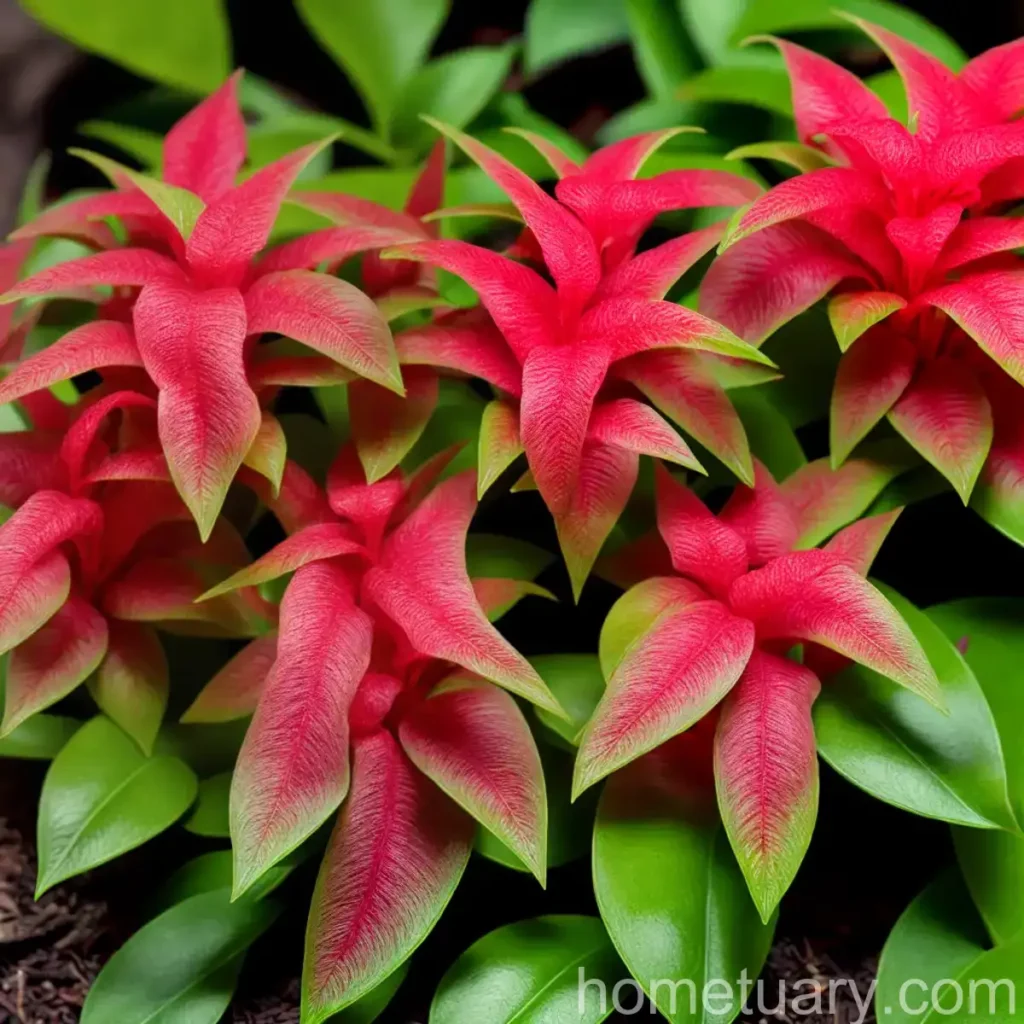What is Plant: Columnea (Columnea Microcalyx)
Columnea microcalyx is a species of flowering plants in the family Gesneriaceae. It is commonly known as the Columnea plant or Goldfish plant due to its uniquely shaped, brightly colored flowers that resemble the appearance of a leaping goldfish. The Columnea microcalyx is native to the tropical rainforests of South America, particularly in countries like Colombia, Ecuador, and Peru. It is a popular ornamental plant grown for its vibrant, pendulous blooms and its attractive foliage.
Key Takeaways – Columnea (Columnea Microcalyx)
- Scientific Name: Columnea Microcalyx
- Common Name: Columnea, Goldfish Plant
- Family: Gesneriaceae
- Native Habitat: South American tropical rainforests
- Popular for: Vibrant, pendulous flowers and attractive foliage
Culture
Columnea microcalyx is revered for its unique and fascinating culture, making it a delightful addition to any indoor or outdoor garden. The plant is known for its ease of care and striking, trumpet-shaped flowers that add a burst of color to any setting. It is highly prized for its luscious, bright green foliage and its ability to thrive in a variety of growing conditions, making it an ideal choice for both novice and experienced gardeners.
Uses
The Columnea microcalyx is primarily grown for ornamental purposes due to its spectacular flowers and foliage. It adds an exotic charm to indoor spaces, gardens, and even hanging baskets. Additionally, its ability to attract hummingbirds and butterflies makes it a valuable addition to wildlife gardens.
Water
Columnea microcalyx enjoys consistent moisture and thrives in a well-draining, slightly moist environment. It is essential to water the plant thoroughly when the top inch of the soil feels dry. However, it is crucial to avoid overwatering, as it can lead to root rot and other related issues.
Sunlight
When it comes to sunlight, the Columnea microcalyx prefers bright, indirect light. It is best suited for locations with dappled sunlight or partial shade, making it an excellent choice for indoor settings with filtered light or outdoor areas with partial shade.
Fertilizer
During the growing season, which typically spans from spring to early fall, feeding the Columnea microcalyx with a balanced, water-soluble fertilizer every two to four weeks can promote healthy growth and abundant flowering. However, it is important to reduce fertilization during the plant’s dormant period in the fall and winter.
Soil
Columnea microcalyx thrives in a well-draining potting mix that is rich in organic matter. A blend that consists of peat moss, perlite, and vermiculite provides the ideal growing medium for this striking plant.
Pruning
Pruning the Columnea microcalyx is recommended to maintain a compact and bushy growth habit. Regularly trimming back leggy or overgrown stems and removing any spent flowers helps to promote new growth and encourage a tidy appearance.
Propagation
Columnea microcalyx can be easily propagated through stem cuttings. By taking healthy, non-flowering stem cuttings and placing them in a suitable growing medium, one can readily propagate new plants to expand their Columnea collection or share with fellow gardening enthusiasts.
Container Popularity
Given its trailing and cascading growth habit, Columnea microcalyx is exceptionally popular for container gardening. It flourishes in hanging baskets, elevated planters, and other containers where its gorgeous foliage and vibrant blooms can gracefully spill over the edges, creating a captivating display.
Common Diseases
While generally hardy, Columnea microcalyx may be susceptible to certain diseases if not provided with proper care. Common diseases that can affect this plant include fungal issues such as powdery mildew and botrytis, as well as bacterial leaf spots.
Disease Diagnosis
It is essential to monitor the plant for any signs of discoloration, spots, or wilting, as these symptoms can indicate the presence of disease. Promptly addressing any signs of illness and providing the appropriate care can help the Columnea microcalyx recover and thrive.
Common Pests
Pests such as aphids, spider mites, and mealybugs can sometimes target the Columnea microcalyx. Regularly inspecting the plant for signs of pest infestations and promptly treating any issues can help to keep the plant healthy and pest-free.
Botanist’s Tips
- Humidity: Maintaining adequate humidity levels, especially in drier environments, can greatly benefit the Columnea microcalyx and promote lush, vibrant growth.
- Support: Providing the plant with a trellis or stake can help guide its trailing stems and prevent tangling, particularly in hanging basket arrangements.
- Temperature: Keeping the plant in a consistent, moderate temperature range, avoiding extreme heat or cold, can foster optimal growth and blooming.
Fun Facts
- The unique and vividly-hued flowers of the Columnea microcalyx have led to its popular nickname, the Goldfish plant, owing to their resemblance to the aquatic creature.
- This charming plant attracts pollinators such as hummingbirds and butterflies, contributing to the biodiversity of the garden and adding a touch of natural splendor.
Links to External Resources
For additional information on the care and cultivation of Columnea microcalyx, check out these helpful resources:
1. The Gesneriad Society
2. Royal Horticultural Society – Growing Columnea Microcalyx
3. Garden Guides – Care Tips for Columnea Plants
In conclusion, the Columnea microcalyx is a captivating and rewarding plant to grow, offering a harmonious blend of exquisite flowers, lush foliage, and ease of care. Whether displayed in a hanging basket, perched in a decorative container, or nestled in a garden bed, the Columnea microcalyx adds a touch of exotic allure to any setting. With proper attention to its cultural requirements and a dash of botanical enthusiasm, this remarkable plant is sure to captivate and delight all who enjoy its beauty.















